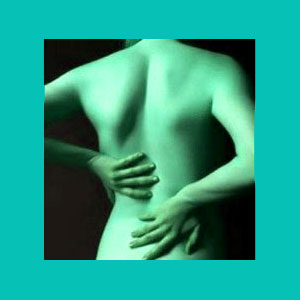
Lumbar herniated disc symptoms are a much debated medical topic, since most bulging discs do not cause any pain or associated neurological effects whatsoever. In some instances, herniations can be painful for a short time, but rarely will a herniated disc go on to enact chronic pain, unless the circumstances are extreme. Long-term back and neck pain blamed on a herniated disc is often misdiagnosed, since the symptoms do not correlate to the structural condition. It is for this reason that all patients should cultivate a fair understanding of what to expect from their diagnosed disc abnormalities in order to better their chances for accurate diagnosis and subsequent successful treatment.
The focus of this article will discus the expected symptomatic expressions which may be enacted by a variety of different disc prolapse conditions in the lower back. If you are suffering with what you think may be lumbar herniated disc symptoms, then this is the ideal research dialog for you.
General Lumbar Herniated Disc Symptoms
Most spinal herniations are completely asymptomatic. The disc itself feels no pain and will not create symptoms regardless of how injured it is. The way a herniation may enact painful effects is through the processes of spinal stenosis,foraminal stenosis, chemical radiculitis and possibly discogenic pain.
Spinal stenosis is a normal part of aging for many patients, although traumatic disc injuries can cause acute symptoms in some unfortunate patients.
Foraminal stenosis, causing pinched nerves, is a diagnosis far more often speculated upon as the source of pain than truly exists. In actual cases of nerve root compression, the consequences should not be the focus of much subjective interpretation, since the symptoms will be obvious and will correlate by location and expression.
Chemical radiculitis is a highly controversial diagnosis which only seems to affect a small minority of patients with ruptured discs or significant annular tears.
Meanwhile, discogenic pain is the most controversial explanation for symptoms, since the localized pain which may be possible would not nearly explain the widespread and severe nature of most symptomatic expressions blamed on the condition.
All four of these circumstances are frequently incorrectly identified as the painful causation, so it pays to investigate your herniated disc diagnosis thoroughly. Utilizing the services of an expert spinal neurologist is one of the best ways to prevent incorrect diagnosis.
Additional Symptoms of Lumbar Bulging Discs
Besides pain, many patients endure chronic neurological concerns, such as tingling, weakness and numbness in the back or other areas of the body served by the implicated nerve structures. Any of these symptoms may be part of a spinal stenosis diagnosis, regardless of where the stenosis exists in the spine. This really complicates matters, since stenosis may exist coincidentally in the lower back, but the actual symptoms may be sourced by undiagnosed severe cervical stenosis in the neck.
Foraminal stenosis, leading to a compressive neuropathy, is expected to produce true objective numbness and weakness in a defined region of the anatomy over time. Chronic pain should not be a lasting consequence of a true pinched nerve root.
However, most diagnosed cases do not correspond to this profile, as most doctors do not take the time to really investigate the symptomatic complaint adequately. They merely see stenotic foramen and assume that all symptoms are linked to this very common degenerative process which occurs almost universally in the lumbar spine. It is no wonder that treatment rarely produces acceptable results.
Chemical radiculitis may not even exist in most patients, even given the correct scenario for it to occur. In some cases, irritation of sensitized neurological structures by leaking disc nucleus pulposus proteins may enact pain. However, other patients have severely ruptured discs which leak the same proteins, but experience no pain at all. Symptoms differ greatly on a case by case basis.
Discogenic pain is the longest stretch of diagnostic imagination, since the tiny nerves involved are not large or important enough to enact the type of widespread pain experienced in most sufferers.
Lumbar Herniated Disc Symptoms Hell
Lumbar herniated disc issues are the most common in the back pain sector. They are the veritable bread and butter of a vast industry of professionals who have grown rich off treating them.
Do not expect that your local doctor or chiropractor will dismiss a herniated disc in the lower back as innocent and asymptomatic, despite the overwhelming evidence of such in the medical literature. It is far too profitable to perpetuate old myths and the structurally-based Cartesian nonsense so inherent to the modern orthopedic specialty.
My advice for patients who can not find relief is to learn the facts about herniated discs for yourself and consider the many far more logical alternate explanations for your pain, both structural and nonstructural.
Herniated Disc > Herniated Disc in the Lower Back > Lumbar Herniated Disc Symptoms





